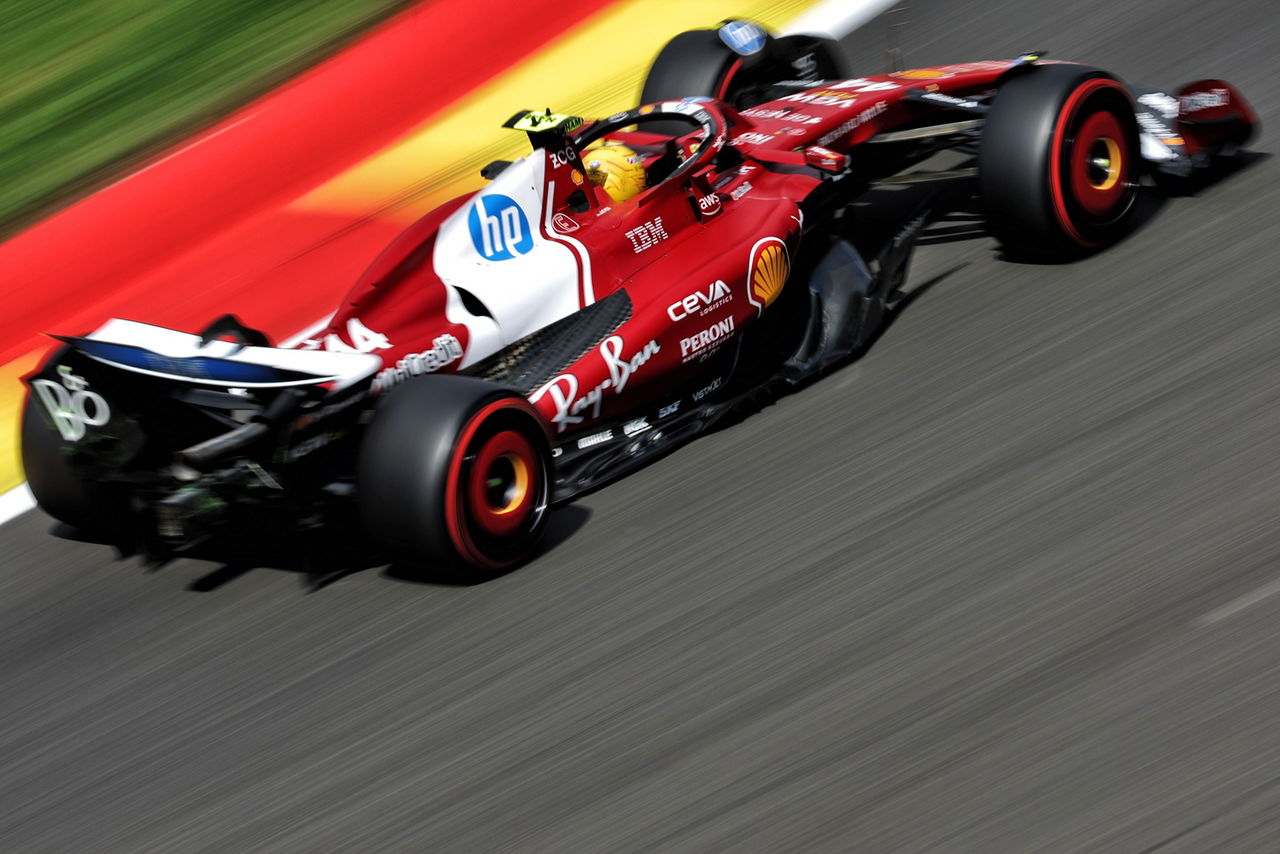Sky Sports Formula One analyst Anthony Davidson has suggested that Lewis Hamilton’s spin during the initial phase of the sprint qualifiers at the Belgian Grand Prix might not have been due to a driver mistake. Hamilton spun out at the bus stop chicane while on his final flying lap in SQ1. By the time the session ended, he was unable to recover, resulting in an 18th place grid position for Saturday’s sprint race. Hamilton expressed disappointment in a brief post-session interview, noting it was the first time he had locked a rear tire that way. However, after reviewing the incident on Skypad, Davidson insisted that Hamilton was not at fault.
Davidson explained that rear lockups are very uncommon in modern F1 cars and attributed the spin to a combination of factors like heavy braking and the car’s response during downshifts. He elaborated that the gearbox experiences backlash when the driver aggressively downshifts while the rear wheels are locked, unsettling the car and causing the spin. The bumpy nature of the corner alongside high downforce levels near 200 mph contribute to a delicate balance of mechanical grip, and minor weight shifts can lead to rear instability under braking. In essence, this complex interplay of car dynamics, rather than driver error, likely caused Hamilton’s spin.
Davidson acknowledged that Hamilton might initially think he was at fault but expects that data analysis will reveal the true mechanical cause. He stressed that with these advanced, digitally controlled cars, there is little a driver can do once such a lockup occurs unless acting recklessly — which Hamilton was not. Similarly, Sky’s Naomi Schiff noted Hamilton’s post-session comments did not sound like an admission of blame, but more a call to investigate the issue further, reflecting Ferrari’s culture of avoiding blame.
Fan Take: This analysis highlights how technical complexities in modern F1 cars can catch even the best drivers off-guard, reminding fans that racing outcomes are often shaped by machinery as much as skill. For the sport, it underscores the importance of data and engineering in understanding incidents, potentially shifting focus from driver fault to technical nuance in future discussions.



